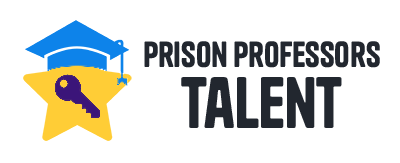Your personal brand can be your greatest asset—one that has the power to open doors, connect you with opportunities, and position you as a leader in your industry. I know this firsthand, and if you’ve visited other areas of Prison Professors, you’ll know that I began building my brand at the start of a prison sentence that kept me confined for 26 years.
While in prison, I learned the power of transformation. To succeed, I’d have to act strategically. I had to draw a line in the sand, letting the world know that I was done making decisions that could put me in the crosshairs of law enforcement, and start working to reconcile, or make amends for the bad decisions of my youth. I had to reinvent myself, building a personal brand without wealth or luxury, but with discipline, authenticity, and consistent execution.
Today, personal branding has become even more important in our interconnected, digital world. Whether you’re an entrepreneur, professional, or career seeker, your personal brand can influence who trusts your voice, who engages with your work, and who seeks your expertise.
Although some may disagree, I don’t subscribe to the fake-it-until-you-make-it mindset. I believe in authenticity, and that there is strength in building a story from struggle to prosperity. The idea of creating a false persona, or mimicking influencers, will not yield the result of honesty.
If a person masters the techniques of storytelling, leveraging unique value, and staying true to core values, opportunities will open. This guide will show you how to build a high-impact personal brand that is both authentic and effective.
What is Personal Branding, and Why Does It Matter?
Your personal brand is the impression you leave on people—the way they perceive your expertise, values, and personality. Your LinkedIn profile and social media presence only work well if they authenticate your actions, words, and the value you bring to others.
Personal branding matters because:
- Trust drives opportunity. People trust and follow individuals who are authentic, informed, and relatable.
- Visibility amplifies impact. Building a personal brand ensures that your work and voice reach the right audience.
- Authenticity builds loyalty. When you share your genuine strengths, challenges, and values, people connect with you on a deeper level.
Some of the most successful individuals—Oprah Winfrey, Elon Musk, and Brené Brown—are examples of powerful personal brands rooted in personal values and unique perspectives.
Step 1: Define Your Unique Value Proposition (UVP)
A strong personal brand starts with clarity about what makes you unique. This is your Unique Value Proposition (UVP)—the clear statement of the value you bring to others.
How to Define Your UVP:
- Identify Your Strengths:
Take stock of your skills, expertise, passions, and personal experiences. What sets you apart from others in your field? For me, my strength came from the lessons I learned by transforming my life during 26 years in prison. What’s yours?
- Understand Your Audience:
Who are you speaking to, and what value do they need from you? Are you addressing entrepreneurs, students, or young professionals? Knowing your audience allows you to craft your brand with intention.
- Solve a Problem:
Great personal brands solve problems for their audience. Ask yourself, “What challenges can I address based on my expertise?”
Craft a concise Personal Brand Statement that encompasses your UVP. For example, mine might be:
“I empower individuals to turn adversity into opportunity through strategic thinking, discipline, and consistent action.”
This lays the foundation for your brand.
Step 2: Craft an Authentic and Compelling Brand Story
Humans connect with stories. Your brand narrative isn’t just a list of achievements—it’s the why, how, and what of your personal mission.
The Hero’s Journey Framework
Think of your personal brand story as a hero’s journey (like those outlined by Joseph Campbell):
- The Challenge: What’s the challenge or adversity you’ve faced?
- The Turning Point: What realization or key experience shaped your current mission?
- The Transformation: What value have you created as a result? How has it helped others?
My story began in a solitary prison cell. I didn’t just survive those 26 years—I built a plan, educated myself, developed skills, and crafted a strategic framework to ensure my success after release. That transformation became the foundation of my personal brand.
Be Vulnerable and Relatable
Authenticity requires showing both your struggles and triumphs. Vulnerability strengthens trust and allows your audience to see the human behind your message.
Quick Exercise: Write a one-paragraph version of your brand story. Ask yourself, “What key lesson do I want my audience to take away?”
Step 3: Build a Powerful Digital Presence
Once you’ve defined your UVP and crafted your story, it’s time to share it with the world. A strong digital presence is the bridge between you and your audience. It’s how you establish your credibility and extend your reach far beyond your immediate circle.
Leverage Social Media Platforms Strategically
- LinkedIn: Optimize your profile with a professional photo, clear headline, and compelling summary that reflects your UVP. Share valuable insights and thought leadership content to engage your network.
- Twitter/Instagram: Use these platforms to connect with new audiences, showcase your personality, and participate in trending conversations relevant to your expertise.
- YouTube/Podcasts: Showcase your voice and expand your reach through video or audio content.
Create Valuable Content
Position yourself as a thought leader by creating content that educates, inspires, or solves problems for your audience:
- Blog posts and articles
- Videos or webinars
- Informative LinkedIn posts
- E-books or guides
For example, my content focuses on actionable strategies to turn adversity into opportunity. What valuable insights can you share with your audience?
Engage With Your Audience
Whether it’s replying to comments or participating in relevant discussions online, engage authentically with those who interact with your content. Visibility is amplified through authentic interaction.
Step 4: Network and Build Relationships
Personal branding isn’t just about broadcasting your message—it’s also about connecting with others and building relationships.
Build and Leverage Relationships:
- Engage with Mentors and Influencers: Seek opportunities for collaboration, mentorship, or partnerships with people who align with your mission.
- Attend Events and Conferences: Visibility also happens in person. Share your work and your story wherever opportunities arise.
- Support Others: Offer value to your connections by sharing insights, providing recommendations, and celebrating their work.
Remember, relationships are the foundation of your brand—and they must be authentic to be meaningful.
Step 5: Stay Consistent and Evolve Your Brand
Consistency is the backbone of building long-term trust for your personal brand. At the same time, be open to adapting as your career or circumstances evolve.
How to Maintain Consistency:
- Use the same tone, messaging, and values across all platforms.
- Regularly post content that reinforces your UVP and expertise.
- Show up authentically, whether it’s in person, on social media, or in articles.
Evolving as You Grow:
Just like any brand, your personal brand will evolve over time. Update your story, value proposition, and digital presence to reflect where you are in your journey.
Final Thoughts
Personal branding is a long game. It requires intention, authenticity, and effort. But when done correctly, the rewards are remarkable—career opportunities, influence, and the ability to create meaningful impact.
I’ve seen this power firsthand—turning years of adversity into opportunities by building my brand authentically, step by step. Remember, your brand is about serving others while staying true to yourself.
Take Action Today:
What’s one step you can take to define or strengthen your personal brand this week? Whether it’s drafting your UVP, crafting your story, or optimizing your LinkedIn profile, every small step builds momentum.
Self-Directed Learning Question:
- What unique value do you bring to others, and how can you share that story to inspire, educate, or connect?
Your story matters. Share it boldly. Share it authentically.

